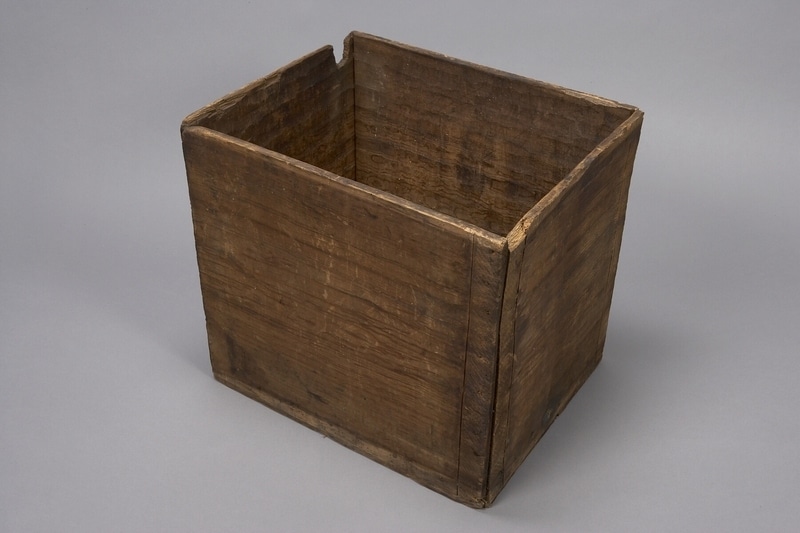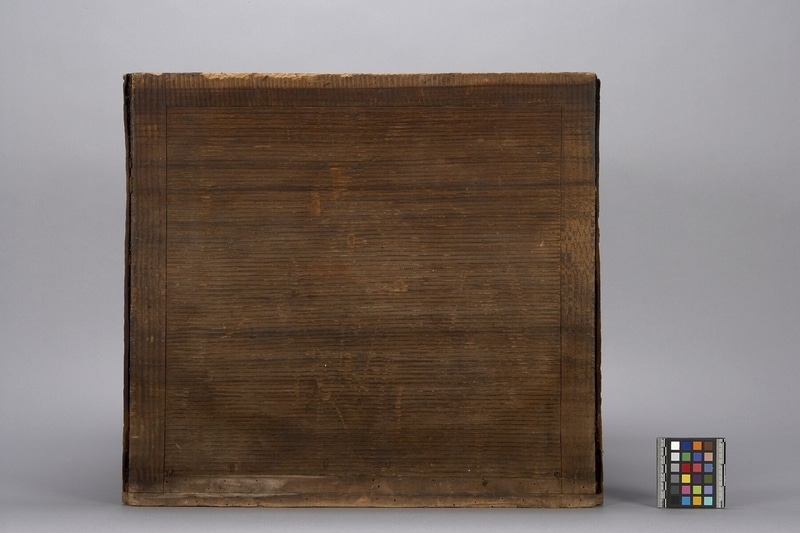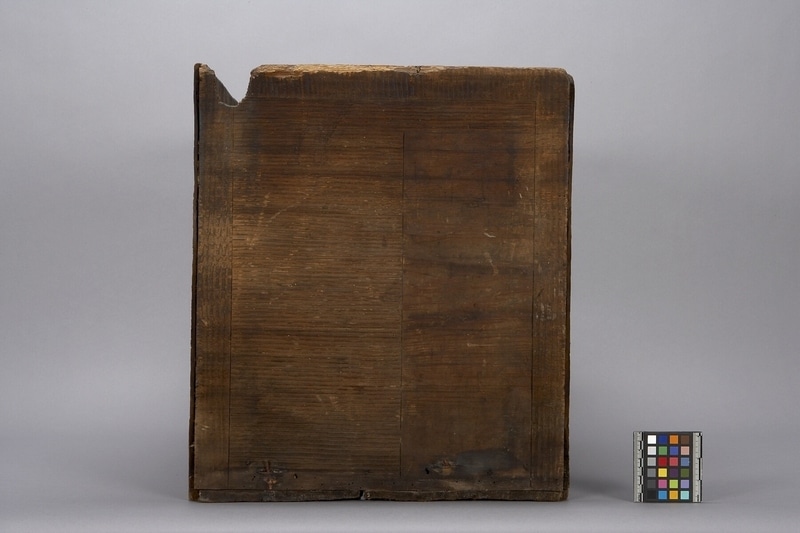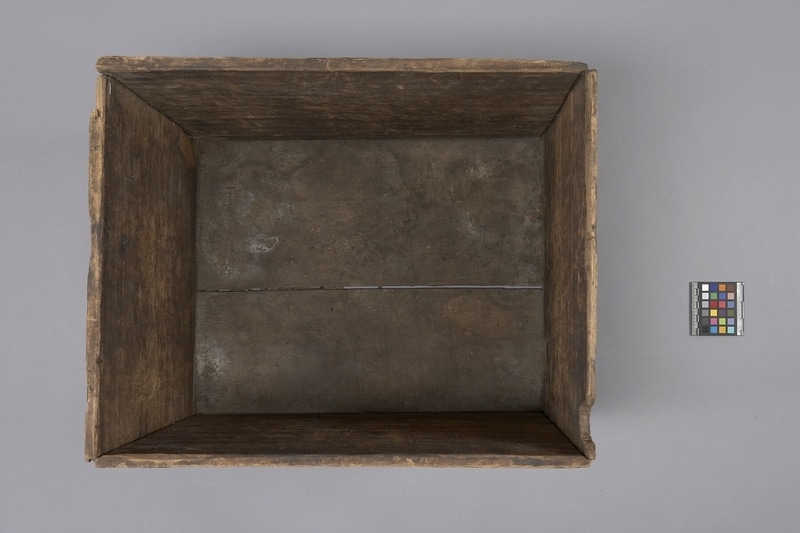Bentwood Box Item Number: Nb3.1349 from the MOA: University of British Columbia




Description
Bentwood box, kerfs cut on both exterior and interior, fourth side pegged, now most pegs fallen away. Two shorter sides and one long side decorated each with panel of horizontal, finely chiseled grooves. Two smaller sides also have one vertical, rectangular area on right. These three panels are surrounded by border of vertical grooves. Remaining side is plain except for one vertical band of grooved diagonals down one edge. Base has split, leaving gap across width.
History Of Use
Bentwood container, a main storage unit on the Northwest Coast, varied in size, shape, and design depending upon the function each one served. Many boxes and chests had two-dimensional carved and/or painted designs of family crest figures, and by their display, stated family wealth and status. Those undecorated, or only slightly decorated with grooves as with this one, were often for everyday use.
Cultural Context
Utilitarian storage box.
Specific Techniques
Bentwood, or kerfed-corner, containers are constructed by a process unique to the Northwest Coast Aboriginal peoples. The carver begins with a single straight-grained plank of red cedar, or sometimes yellow cedar, spruce, or yew. The surface of the plank is finished with chisels, adzes, and knives; in earlier times, it was smoothed further with sandstone or dried sharkskin. Then three parallel kerfs, or grooves, are carved out at measured points across the width of the board, at right angles to the long edge. The kerfs, which will become three corners of the box, allow the board to be steamed until the wood fibres are softened, and then carefully bent to form a box with symmetrical sides. The final corner, as well as a fitted base, are joined and fastened with pegs (through drilled holes) or laced with spruce root or twisted cedar withes (branches). Storage boxes also have fitted lids of cedar, hollowed from the inside. Finally, painted compositions may be applied to the completed box and shallow carving added to bring the forms into relief. A well-made bentwood box is watertight. Historically, most boxes were used to store preserved foods and material goods; plain cooking boxes could be used to steam or boil food by adding water and heated stones.
Narrative
Wastell said he collected the belongings in this donation in Telegraph Cove in the 1920s.
Item History
- Made in British Columbia, Canada before 1930
- Collected in Telegraph Cove, British Columbia, Canada during 1925
- Owned by Fred Wastell before February 7, 1983
- Received from Fred Wastell (Donor) on February 7, 1983
What
Who
- Culture
- Kwakwaka'wakw
- Previous Owner
- Fred Wastell
- Received from
- Fred Wastell (Donor)
Where
- Holding Institution
- MOA: University of British Columbia
- Made in
- British Columbia, Canada
- Collected in
- Telegraph Cove, British Columbia, Canada
When
- Creation Date
- before 1930
- Collection Date
- during 1925
- Ownership Date
- before February 7, 1983
- Acquisition Date
- on February 7, 1983
Other
- Condition
- poor
- Current Location
- Case 39
- Accession Number
- 0851/0007